Managing the Dja Biosphere Reserve for Wildlife and People: Establishing Community Conservation and Management Areas (CCMAs)
Registered by UNESCO in 1987 on the list of World Heritage Sites, the Dja Biosphere Reserve (DBR) covers an area of 526,000 ha surrounded by approximately 97,800 ha of unprotected forests. Located just about 3° above the equator at the confluence of the Biafra and the Congo Basin biogeographical regions, it is situated mostly within the loop of the Dja River which forms approximately 75% of its boundary. DBR is home to some of the key flagship species in the world including forest elephants, western lowland gorilla and the central chimpanzee. It is one of Africa’s most biodiverse rainforest with the largest and most biologically diverse tracts of protected rainforest in Central Africa.
The size of the human population at the DBR is estimated at 19,500 people in the villages located inside the core zone and about 30,000 inhabitants at the immediate vicinity. With the increasing human population comes conservation challenges that include poaching by outsiders and resident hunters, as well as the quest for farmlands. Other activities include logging, mining and the collection of non-timber forest products.
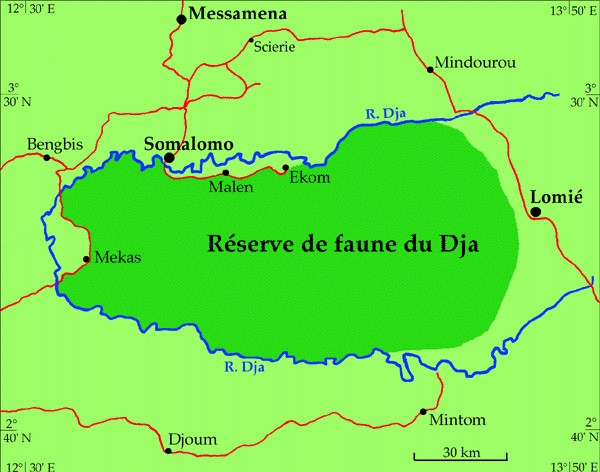
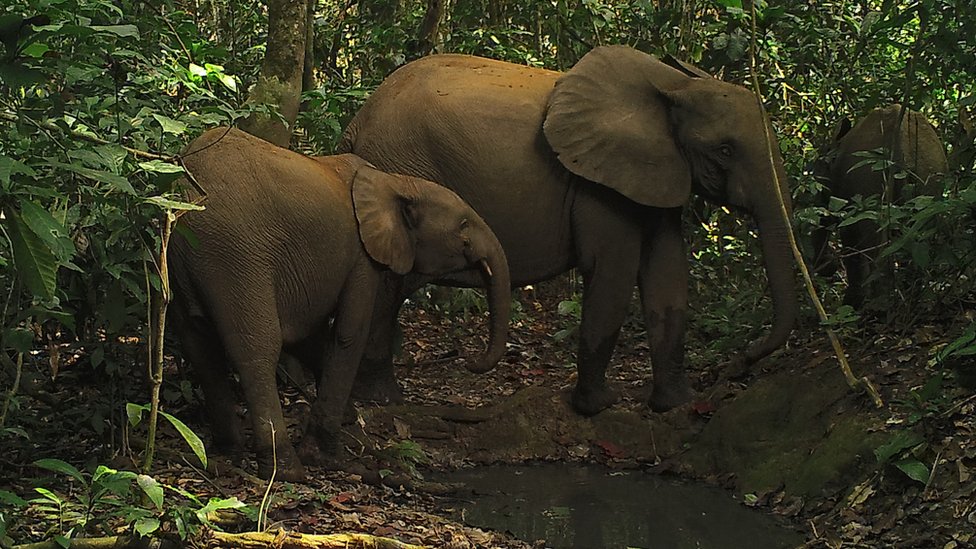

Forest elephants (Loxodonta cyclotis) are now classified by IUCN as a critically endangered species globally. The report published 25th March 2021 indicates that the population of African elephants in the wild has declined to over 86%. A recent forest elephant dung-sampling survey in 2020 covering the entire Dja World Heritage site estimates the population of only 0.042 individuals/km2 (or 219 individuals) confirming a decline in recent years largely attributable to poaching for illegal ivory trade.
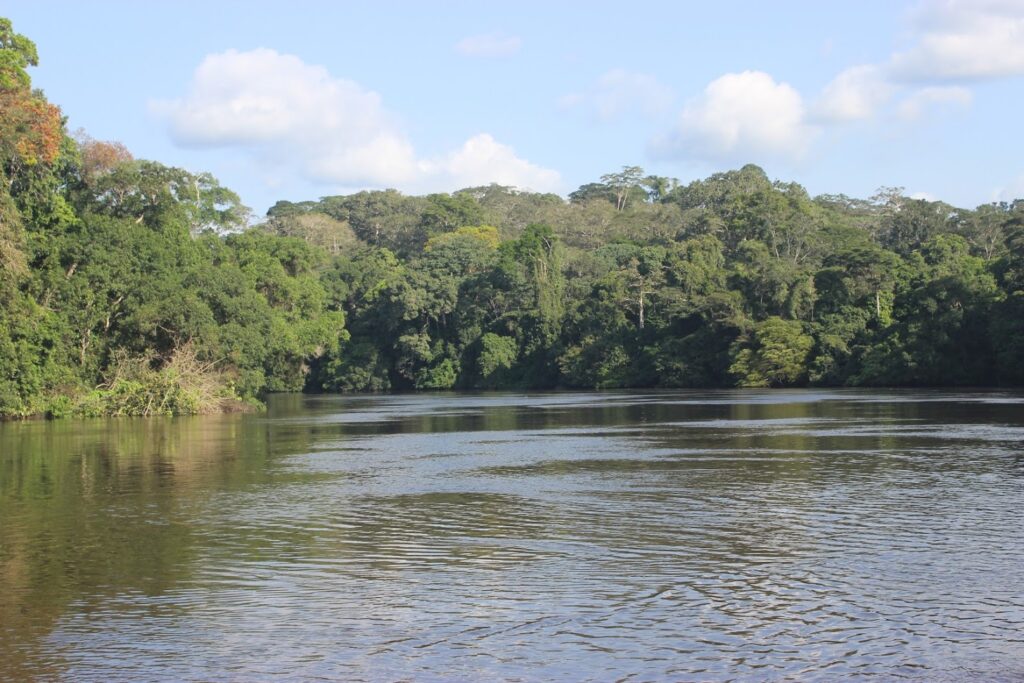
The Dja river has a course of approximately 720 km2 rising southeast of Abong-Mbang and protects one of the largest tracts of tropical rainforest in Africa: the Dja Biosphere Reserve and UNESCO World Heritage Site. Forming the natural boundaries of this forest and almost completely encircling it (except to the south-west), cliffs run along the course of the river in the southern part for 60 km and are associated with a section of the river which is broken by rapids and waterfalls.
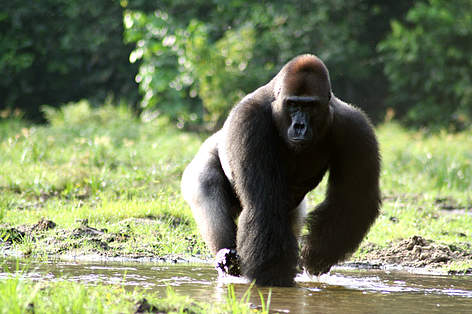
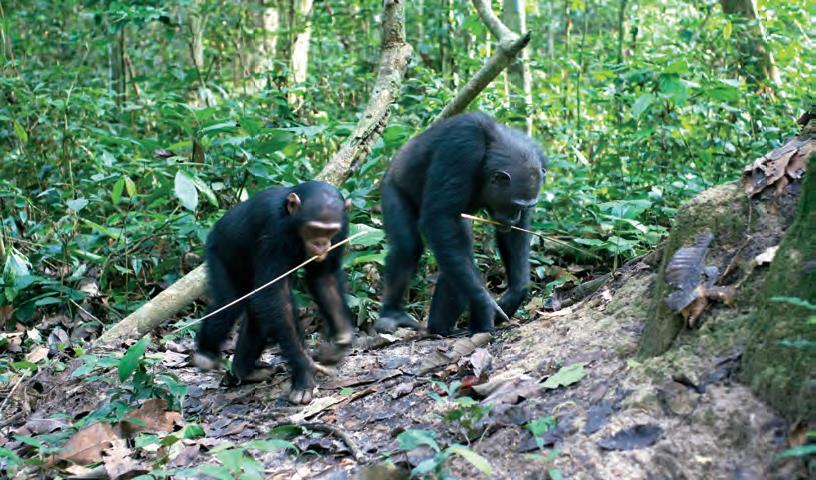
The population of great apes at the Dja Biosphere Reserve is declining, but that of the Western Lowland Gorilla (Gorilla gorilla gorilla) seems to be declining faster paste. A recent survey conducted by the London Zoological Society estimates a total of only 1,258 individuals left at a density of 0.24/km2. A combination of factors is behind this decline including poaching, diseases and habitat loss. Current efforts focusing on law enforcement are marred by low capacity of the protection and monitoring team, inadequate resources, corruption and the undefined role of the local communities in conservation.
The population of the endangered central chimpanzee (Pan troglodytes troglodytes) is equally under pressure at Dja Biosphere Reserve. Depleting habitats, poaching and diseases are undermining the remaining population and narrowing down their genetic bases. Whilst declining in density, it appears that the population of central chimpanzee has declined less than gorillas and elephants within the reserve calling for sustained attention.
OUR NEW APPROACH AT DJA BIOSPHERE RESERVE
ACDEF and partners are working to strengthen ongoing efforts by the government and other partners and enhance the effectiveness of the protection and monitoring for the benefit of wildlife and the people at the Dja Biosphere Reserve through the establishment and support to Community Conservation and Management Areas (CCMAs).
We are specifically taking the following lines of action:
- Establish a platform for dialogue, education and communication at the level of the local communities in and around the reserve.
- Increase agricultural productivity in areas in and around the reserve that are prone to crop raiding by wildlife including the critically endangered African forest elephants as a tool to enhance community support for the protection of wildlife.
- Pilot community enterprise-based models for the protection of wildlife in and around the reserve that draw on ecosystem services to generate and/or enhance community benefits for conservation.
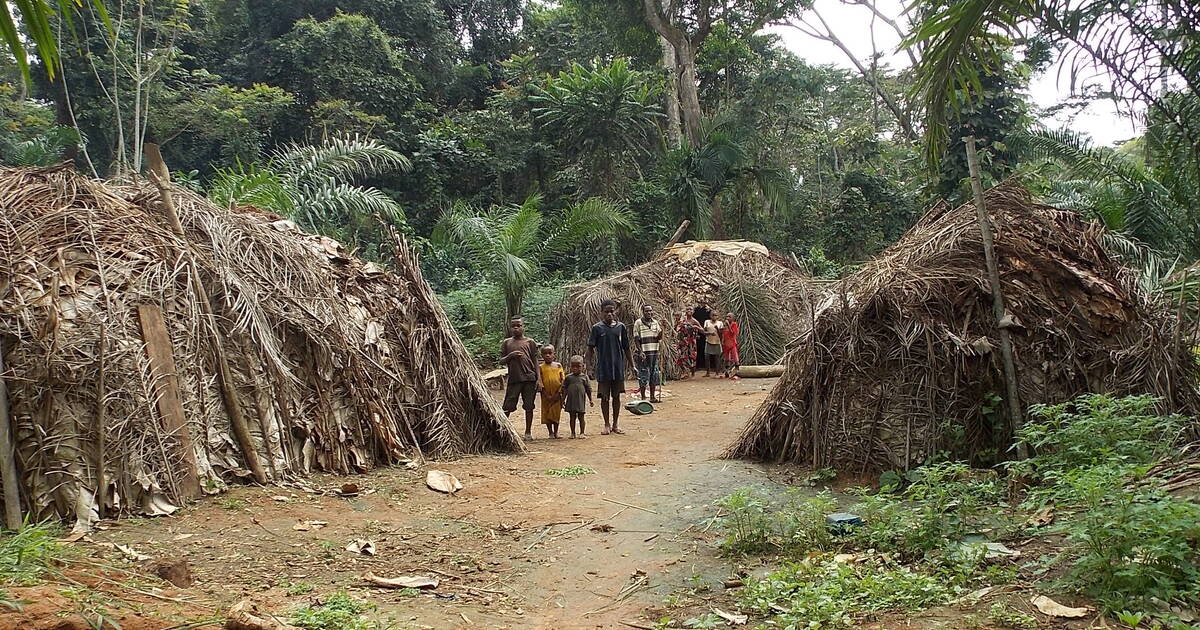

 Join
Join